The HTC One M9 Review: Part 1
by Joshua Ho on March 22, 2015 7:00 PM EST- Posted in
- Smartphones
- HTC
- Qualcomm
- Mobile
- Snapdragon 810
- One M9
Display
By now, it generally goes without saying that a high end smartphone needs to have an amazing display. However, defining what an amazing display is can often be quite difficult. We can all agree that a display should get as bright as possible and that black pixels should be as dark as possible, but some characteristics are often subject to personal biases. Something as simple as white point can divisive because some people prefer warmer colors, but others prefer a colder color balance. Color in general can be a subjective preference, as some prefer wide color gamuts and saturation compression to achieve a vivid look, but others prefer more muted and subtle colors.
However, despite subjective preference we have to all have a common standard for color rendition. After all, if pink on one screen looks like magenta on another, this could easily result in a number of problems when sharing content. Something as simple as taking a photo can be difficult with an inaccurate display, as white balance on a photo could easily appear to be incorrect for a scene even if it isn’t. As a result, in addition to judging simple characteristics such as brightness and contrast, we also test how well a display matches against the sRGB color standard with a gamma target of 2.2. In order to do this, we use our usual test suite which includes X-Rite’s i1Pro2 for accurate color and brightness measurements, along with X-Rite’s i1Display Pro for accurate contrast measurements. In order to fully utilize this hardware, we use SpectraCal’s CalMAN 5 Ultimate with a custom workflow for mobile devices.

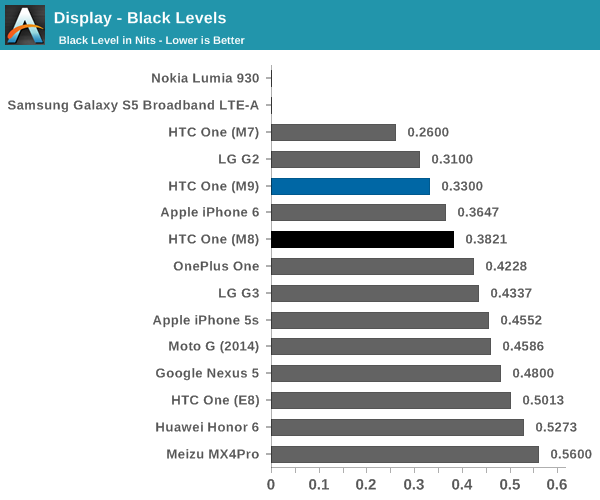
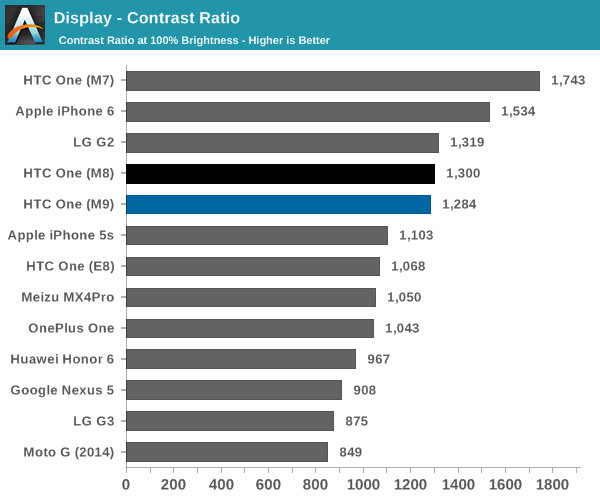
Our first test is focused on some of the basic aspects of the display, namely brightness and contrast. In this regard, the M9 seems to effectively identical to the M8. Both have some level of content-adaptive backlight control, which means that static contrast is lower than the value that we’ve tested it for.
Outside of this basic test, I noticed that the display has worse viewing angles than the M7 and M8. Although the off-angle glow isn’t visibly different when shifting the display along the horizontal and vertical axes, anything in between dramatically decreases contrast as seen in the photos below. It’s likely that this is related to the polarizers used, as the IPS glow effect is strongly angle-dependent. In practice, this really does reduce the effective contrast of the display. The brightness of the display could be higher, but it’s likely that at this point it makes more sense to target lower reflectance with improved coatings rather than driving brightness.
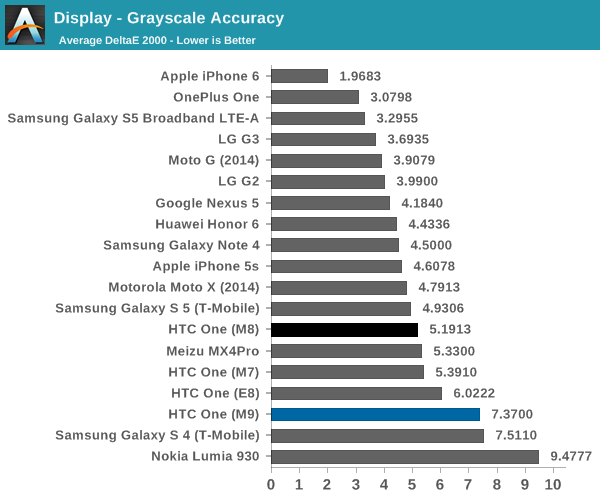
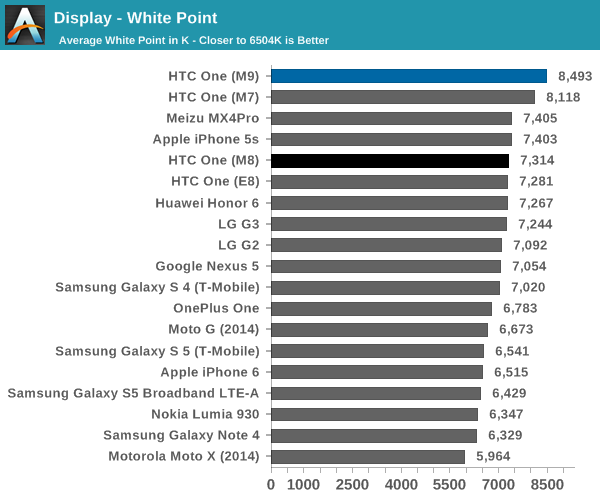
Moving on to grayscale calibration, we can see a dramatic reduction in accuracy when compared to the M7 and M8. Although gamma is generally correct, the white balance ends up far too green and blue. The next most notable issue seems to be related to CABC, as there’s a dramatic increase to gamma from 70% to 100% white. In practice, everything looks excessively cold and with a strange green tint to a lot of content, which really hurts the viewing experience. In order to get an idea for whether this is just a single point or a general trend, we can look at the saturation test which introduces multiple colors.
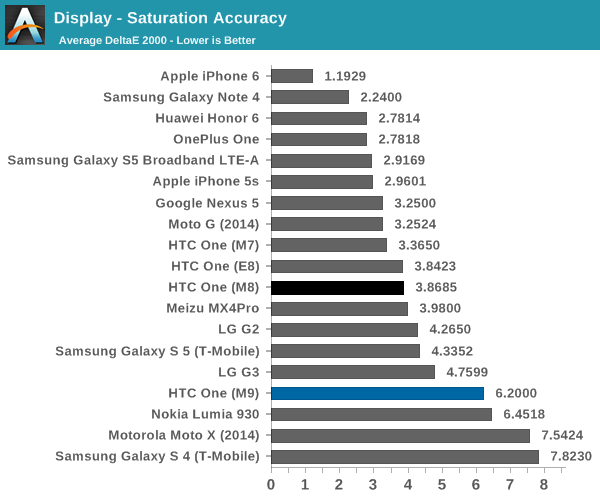

As we can see, in the saturation test this excess of green and blue in colors is not an isolated case of white balance. Colors like magenta are significantly skewed towards blue, yellow tends to skew towards green, and colors like blue and green have noticeable saturation compression. As a result, the color accuracy will be noticeably different from a monitor that follows the sRGB standard. The only positive aspect of this color calibration is that HTC has managed to constrain the gamut of the display to sRGB, unlike the M8 which noticeably exceeded sRGB.
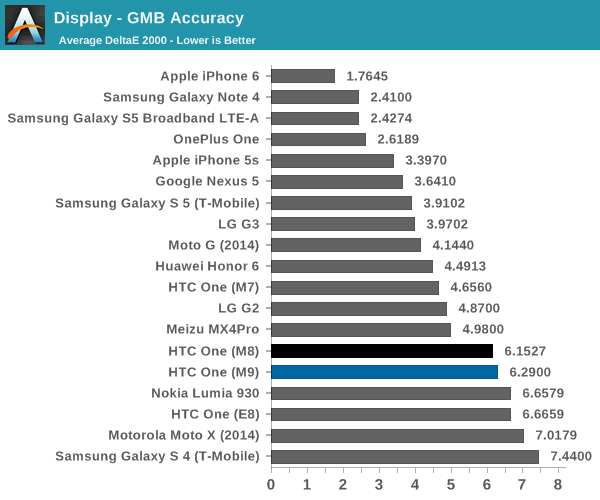
In the Gretag MacBeth ColorChecker, we can get a holistic view of color accuracy within the sRGB space which tests hue, saturation, and gamma to see display calibration as a whole. Somewhat predictably, the M9 also falls short in this scenario. Given how significant the deviations are, it would be difficult to use the M9 in any case where color accuracy is needed.
Overall, the display of the M9 is disappointing. At some point, it was clear that HTC was integrating some of the best mobile displays possible into smartphones, but starting with the M8 it seems that we’ve seen HTC slip in this area. The M9 continues this trend, which is somewhat concerning as the display of a slate smartphone tends to be a critical part of the experience. Some may be eager to point to AMOLED as an alternative, but the problem is that HTC has failed to integrate a high quality LCD into the M9. In the near future though it seems that it may make sense for HTC to move to AMOLED. However, it’s unlikely that such a move would result in any reduction of bezel size as all current displays require a display driver that must be placed directly next to the display.



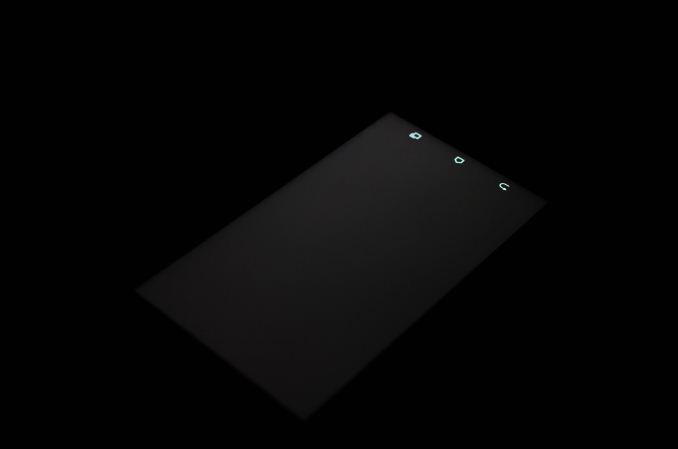
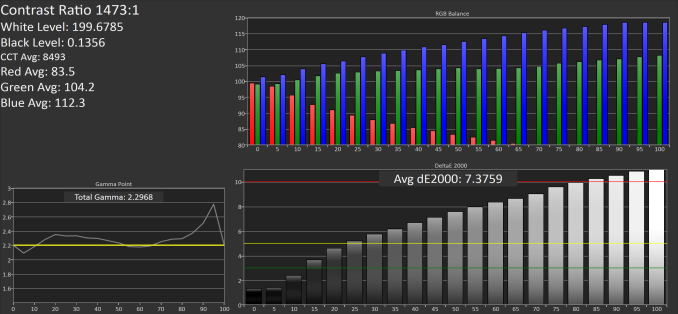
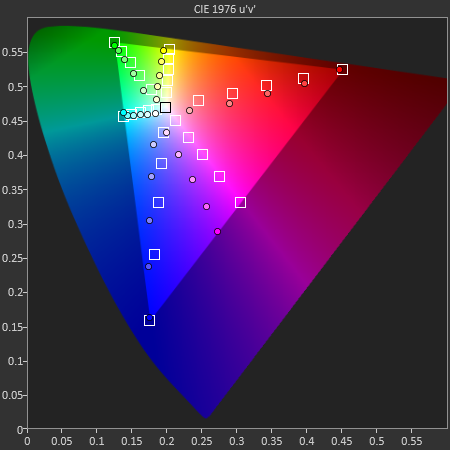
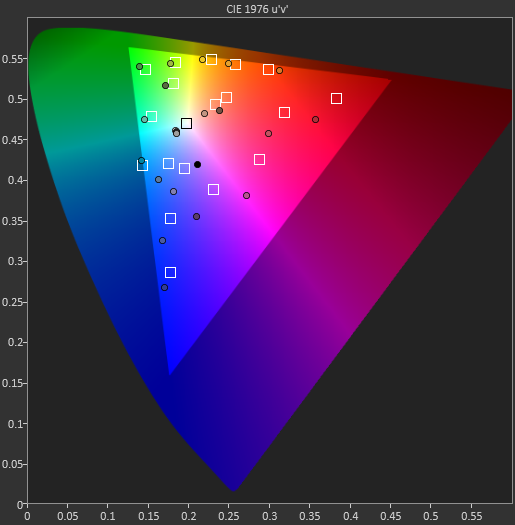








132 Comments
View All Comments
Midwayman - Tuesday, March 24, 2015 - link
With android it almost always seems to be misbehaving apps. Its hard to compare unless you keep the OS stock. I've spent a fair amount of time chasing down wakelocks.Notmyusualid - Sunday, March 22, 2015 - link
My gf noticed too.She went to buy a new Windows phone after she 'fell' into the pool this weekend, drowining the Nokia 820 I bought her. Ok, I dunked her...
But alas the top models were out of stock at the biggest shopping center available. Eventually she left with a Galaxy A7 (Octa core, 5.5" 1080, fast ram, dual sim) and whilst I'm impressed, she, not too much. She really wanted a Windows Phone it seems.
zodiacfml - Monday, March 23, 2015 - link
I feel bad. They've focused too much on the physical materials of the phone, hurting the other parts.They could have also went for a larger display at the same resolution to increase battery size and minimize bezels.
This will be competing with the S6 which is the phone to get in 2015 because of its very nice camera.
mchart - Monday, March 23, 2015 - link
A larger display is not what it needs. What it needs is the same display but in a chassis that is smaller and doesn't have all that useless area needlessly increasing the size of the phone.Impulses - Monday, March 23, 2015 - link
Pretty underwhelming, I'm starting to wonder whether I'll hold on to my current phone even longer than 2 years, it's the first one I've had for more than a year as it is. Z3c was the only thing that tempted me last year...mchart - Monday, March 23, 2015 - link
IMO the Z3C is the best phone in the market. It's just a shame it's been largely ignored.I'm an iPhone fan and the Z3C is the first Android running hardware that hasn't led to disappoint for me. Great battery life, great build quality, feels nice in normal usage, has top end hardware packed in, and is running pretty much vanilla Android.
It can be had for a really great price now too. Low $400s, and you can get it in that same price range direct from Sony with a 1 year warranty if you make a free student account to receive 10% off through them.
It's really the best phone if you can't stand/deal with these larger monsters that are frankly a pain to use on a day to day basis for simple things like phone calls.
sonny73n - Monday, March 23, 2015 - link
The Z3C has a few problems. It would be the best phone in the market if it had better display and protective glass. I wish my Z3C has the same display quality as the M7 and Gorilla 3 front and back glass.mchart - Monday, March 23, 2015 - link
The z3 has gorilla glass front and back. The display is high quality as well. It's just not 1080p. The ppi is still high enough for that size though.V900 - Monday, March 23, 2015 - link
Yeah, 1080p is really overkill for a phone right around 4 inches. I honestly couldn't tell the difference between 1080p 720p and the 1136*640 on a 4 inch screen in regular usage. As long as it's above 300 PPI few people would be able to tell...Impulses - Monday, March 23, 2015 - link
If I was buying a phone today I'd probably pick it over my Nexus 5 (are they even still selling the N5?), tho I'd have to switch carriers for it... I'm satisfied with Sprint in my area for now and that's one of the reasons I've kept the N5.A Z3c with Qi wireless charging and OIS would be the perfect compact Android phone IMO. Hopefully Sony doesn't abandon smaller devices (or the smartphone market altogether) any time soon.
Whatever they follow up the Z3c might just be the replacement for the N5 I've had since Nov 2013... I had three HTC phones before the, pretty happy with them, the One just hasn't done it for me.
Ergonomically it's always felt odd and it seems they're treading water in most other senses (no pun intended).